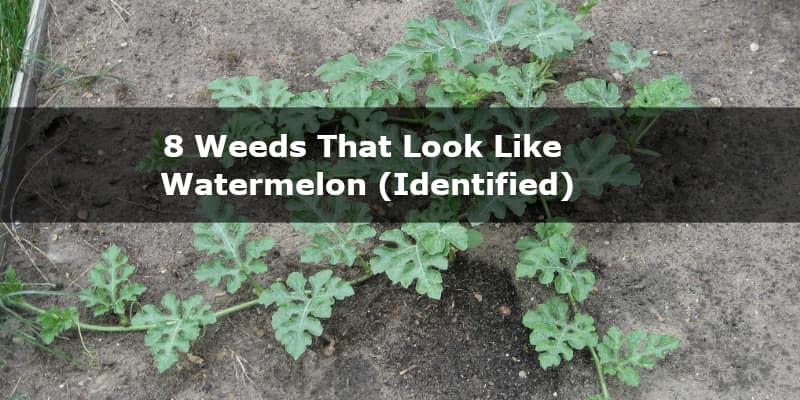If you’ve noticed weeds that look like watermelon, but you’re not sure what’s their name, I have something for you.
In this post, I listed all the possible watermelon-like weeds, so you can identify them.
1. Solanum Nigrum
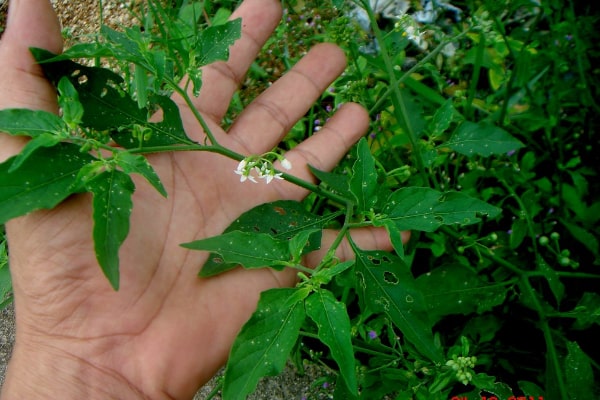
Solanum nigrum, also called the European black nightshade or blackberry nightshade is a species of flowering plant in the genus Solanum. Ripe berries and cooked leaves of edible strains are used as food in some locales. Black nightshade is a common herb or short-lived perennial shrub, found in many wooded areas, as well as disturbed habitats.
It reaches a height of 30 to 120 cm (12 to 47 in), leaves 4.0 to 7.5 cm (1.6 to 3.0 in) long and 2 to 5 cm (1 to 2 in) wide; ovate to heart-shaped, with wavy or large-toothed edges; both surfaces hairy or hairless; petiole 1 to 3 cm (0.5 to 1 in) long with a winged upper portion.
The flowers have petals greenish to whitish, recurved when aged, and surround prominent bright yellow anthers. The berry is mostly 6 to 8 mm (0.24 to 0.31 in) in diam., dull black or purple-black.
Solanum Nigrum blooms in the summer and bears fruits in the late summer, and fall.
2. Solanum Carolinense
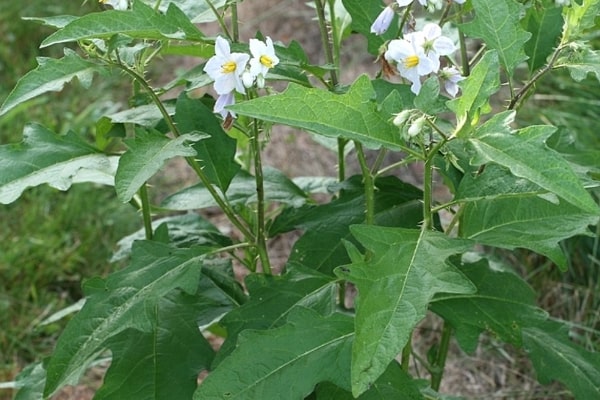
This herbaceous perennial is also known as Carolina horsenettle. The plant is up to 3′ (90 cm) tall, branching occasionally.
The stems have scattered white or yellow spines. The alternate leaves are up to 6″ (15 cm) long and 3″ (7,5 cm) across, and have short petioles. They are broadly lanceolate or ovate, but rather angular along the margins, which are slightly ciliate. There are white hairs and scattered spines along the central vein on the underside of each leaf.
The upper stems terminate in small clusters of star-shaped flowers with hairy pedicels. These flowers are white or light violet, and have 5 petals that are united at the base. Near the center, there are 5 elongated yellow anthers that are very prominent. There is no noticeable floral scent.
The blooming period can occur from early summer to early fall, and typically lasts about 1½ months. Afterwards, round fruits develop that are a little more than ½” (1.2 cm) across and half-enclosed by a papery calyx. They become yellow when mature. Each fruit contains numerous seeds that are glossy yellow and flattened.
3. Solanum Linnaeanum
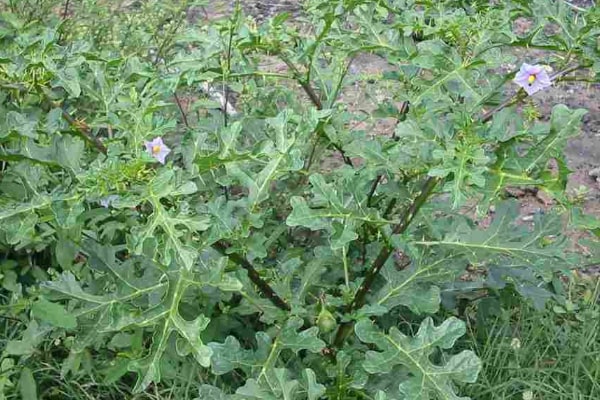
Solanum linnaeanum, also known as devil’s apple, or apple of Sodom. This poisonous plant-bearing tomato-like fruit is native to many African countries and is considered to be an invasive species in Australia.
This perennial plant has attractive flowers, each with five purple petals and small yellow stigmas, but it also has vicious thorns. The previous year’s fruits can sometimes be seen ripening, while the new season’s flowers are attracting insect pollinators.
The fruits are typically 3-5 cm (1.2-2.4 inch.) across and look very much like unripe tomatoes; they appear in late summer; turning gradually from green to bright yellow and eventually black.
This is a weed of warmer temperate, sub-tropical and semi-arid regions that invades pastures, open woodlands, grasslands, roadsides, waste areas, disturbed sites, coastal environs, and creeklines.
4. Citrullus Ecirrhosus
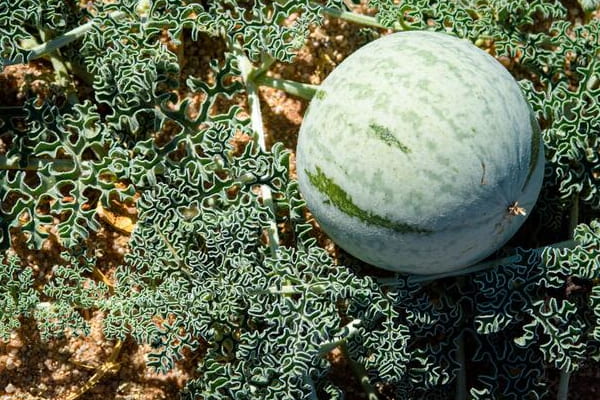
Citrullus ecirrhosus, commonly known as Namib tsamma, is a species of perennial desert vine in the gourd family, Cucurbitaceae, and a relative of the watermelon. It can be found in both Namibia and South Africa. It is the sister species to the bitter melon with which it shares hard, white, and bitter flesh.
The vines can crawl for up to 6.5 ft, (2 meters), and it has yellow flowers. As a desert plant, it is a hardy species, surviving with little water and strong sunlight. The leaves form annual stems which die back each year. The plant relies on water deep in the ground and morning fogs. It is an important source of water for numerous desert fauna.
5. Sicyos Angulatus
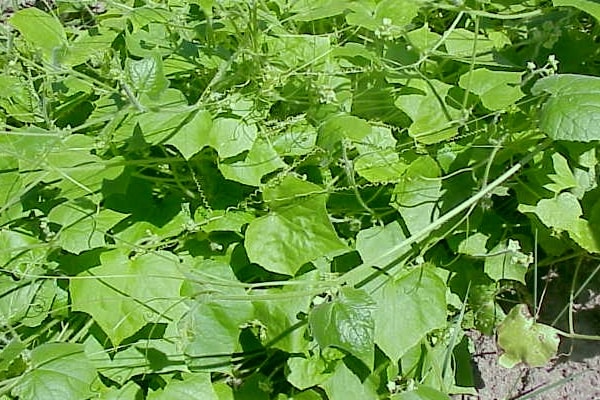
Sicyos angulatus, or bur cucumber, is an annual vine native to eastern North America. Individual flowers have 5 greenish-white pointed petals, tinged green at the base, with pale green veins along the length of the petal.
Flowers are about ½ inch (1.3 cm) across, stalked, in a raceme of 3 to 10 flowers clustered at the end of a long, hairy stem attached opposite a leaf.
Leaves are about the same length and width, from 4-8 inches (10-20 cm) across, with 3 to 5 shallow lobes. The shape is somewhat like an angular heart or maple leaf. There are tiny widely spaced teeth all around the edges. The underside of leaves is finely hairy. Stems and stalks are covered in long, spreading hairs.
The color of the fruit is initially green and eventually turns brown.
6. Echinocystis Lobata
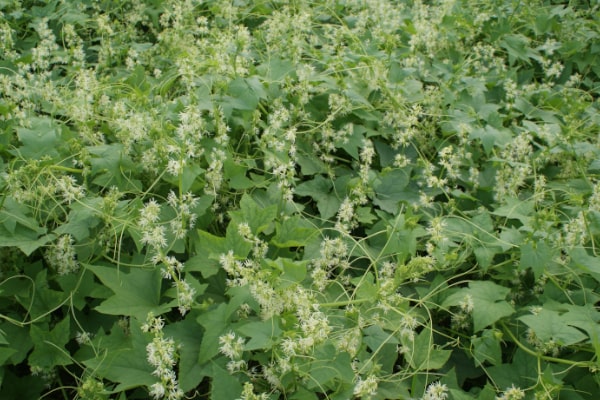
Echinocystis Lobata is commonly called wild cucumber, or bur cucumber. It is an annual, sprawling plant that is native to North America. It is an annual vine that produces stems that can be as long as 8 m (26 ft) and which climb, with the help of coiling, branched tendrils, over shrubs and fences or trail across the ground.
The stems are angular and furrowed. The leaves are alternate with long petioles, five palmate lobes, and no stipules. Each flower has a white, or greenish-yellow, corolla with six slender lobes. The fruit is a prickly, inflated capsule up to 5 cm (2 in) long with two pores and four seeds.
It resembles a tiny spiny watermelon, or cucumber, but is inedible.
7. Buffalo Bur
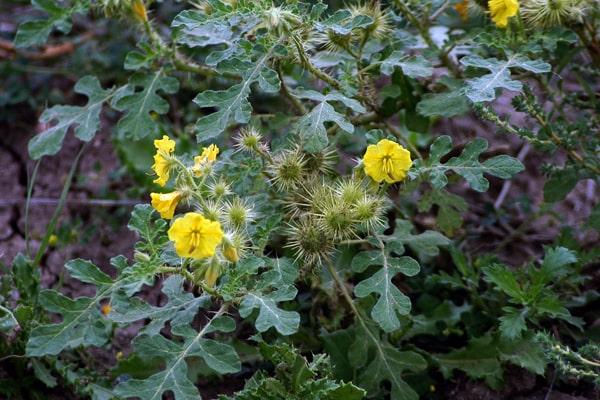
Another plant similar to watermelon is Solanum rostratum, known as Buffalo Burr. It’s a prickly, annual, warm-season plant of the nightshade family, typically growing up to 2 feet (60 cm) tall. This plant is considered a weed nearly everywhere it grows.
The leaves vary in shape and size, are irregularly rounded and deeply lobed, and have spiny veins. The stems are profusely thorned. The yellow flowers appear from May to October, and the fruit is enclosed by a prickly bur.
8. Mouse Melon
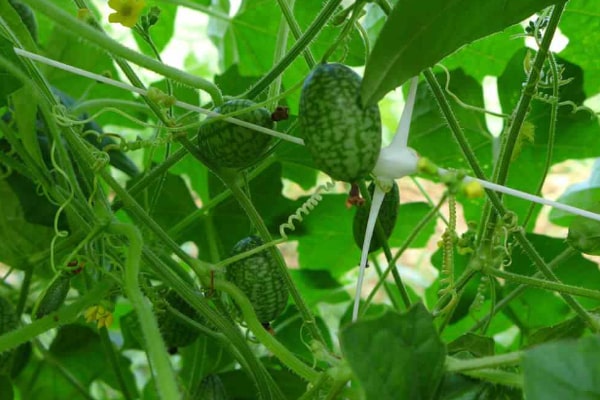
Melothria scabra, known as Mouse Melon is a cross of cucumber and watermelon. It’s native to Mexico and Central America. This plant is grown for its tiny edible fruit that looks just like a miniature striped watermelon.
The plants look very similar to regular cucumbers, with palmate leaves and curling tendrils on long vines, but are just slightly smaller in size. A fast-growing tender tropical perennial, it is easily grown as an annual in temperate climates.
Small, solitary yellow flowers with five petals are produced in the leaf axils. This plant is unusual among cucurbits in that female flowers appear before male flowers, not the reverse like regular cucumbers.
Sources
en.wikipedia.org, illinoiswildflowers.info, first-nature.com, keyserver.lucidcentral.org, minnesotawildflowers.info, rangeplants.tamu.edu

